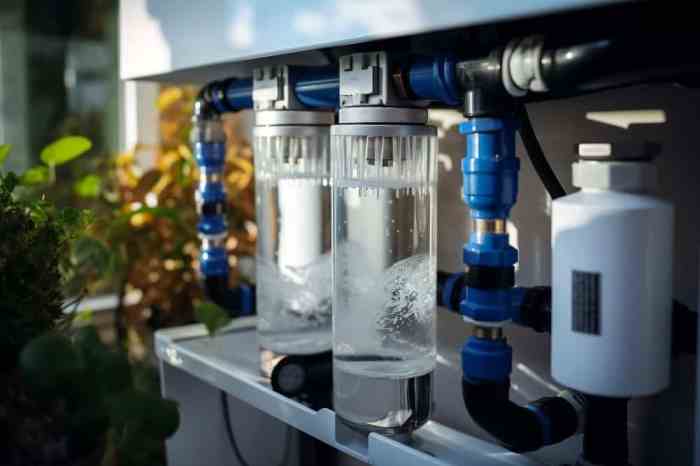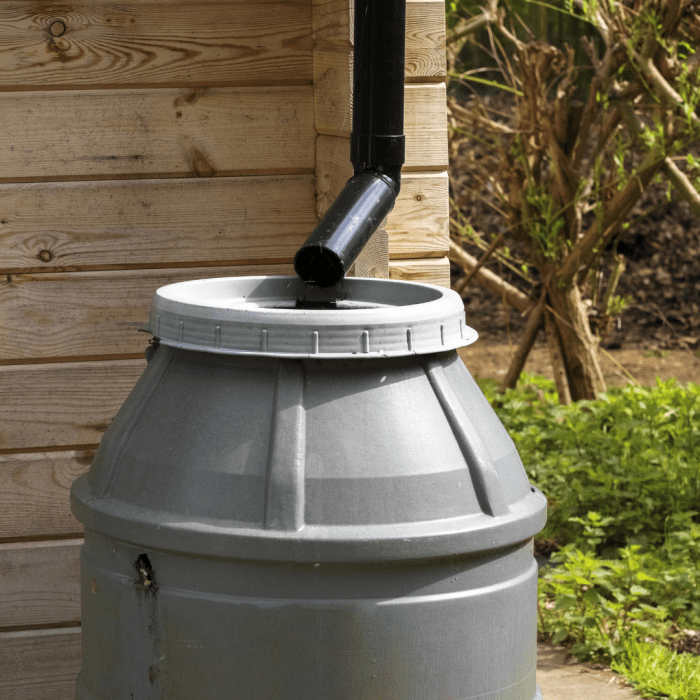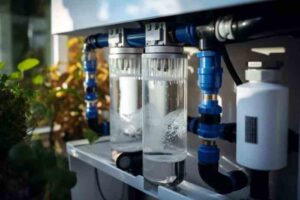
Eco-friendly plumbing solutions are increasingly becoming essential in modern homes as homeowners recognize the significance of sustainability. These solutions not only contribute to environmental conservation but also offer numerous benefits, such as reducing utility bills and enhancing property value. A dive into eco-friendly materials reveals their pivotal role in creating efficient plumbing systems that prioritize both functionality and ecological responsibility.
From water-saving fixtures to innovative irrigation methods, eco-friendly plumbing integrates seamlessly into various aspects of home design, making sustainable living more attainable for everyone.
Introduction to Eco-Friendly Plumbing Solutions

The plumbing system in a home plays a crucial role not just in daily convenience but also in environmental sustainability. As we become more aware of our ecological footprint, the shift towards eco-friendly plumbing solutions is increasingly important. These solutions not only minimize the negative impact on the environment but also provide cost savings and health benefits for homeowners.Sustainable plumbing practices incorporate innovative methods and materials that reduce water usage, energy consumption, and waste production.
By embracing eco-friendly plumbing, homeowners can contribute to environmental conservation while enjoying the advantages of modern and efficient plumbing systems. The integration of these solutions often leads to lower utility bills and a healthier living environment, aligning with the growing trend of sustainable living.
Common Eco-Friendly Materials Used in Plumbing Systems
The selection of materials in plumbing systems significantly influences their environmental impact. Eco-friendly plumbing utilizes sustainable materials that minimize pollution and resource depletion. The following are some commonly used eco-friendly materials:
- PEX (Cross-linked Polyethylene): A flexible plastic tubing that is resistant to scale and chlorine, does not corrode, and has a lower environmental impact compared to traditional copper piping.
- Recycled Materials: Many plumbing fixtures, such as faucets and toilets, are now made from recycled metals and plastics, reducing the need for virgin resources.
- Low-Flow Fixtures: Incorporating low-flow showerheads and faucets help reduce water consumption without sacrificing performance.
- Biodegradable Sealants and Adhesives: These products are made from natural materials and are less harmful to the environment than traditional chemical options.
Using these eco-friendly materials not only contributes to a sustainable environment but also ensures the longevity and efficiency of plumbing systems. This approach helps to create a more responsible plumbing infrastructure that is essential for modern homes and communities.
The Role of Eco-Friendly Plumbing in Interior Design
Eco-friendly plumbing solutions are not only beneficial for the environment but also play a significant role in enhancing the aesthetics of interior spaces. By prioritizing sustainability in plumbing choices, homeowners can create a harmonious balance between functionality and beauty in their living environments.Incorporating eco-friendly plumbing into bathroom and kitchen designs introduces innovative features that are both visually appealing and energy-efficient.
Sustainable materials and technologies can seamlessly integrate into modern or traditional decor, elevating the overall design while promoting environmental consciousness.
Integration of Sustainable Plumbing Solutions in Bathroom and Kitchen Design
The integration of eco-friendly plumbing solutions significantly enhances the aesthetic appeal of bathrooms and kitchens, areas that are often focal points in home design. Sustainable plumbing fixtures, like low-flow faucets and dual-flush toilets, come in various styles and finishes that complement contemporary or classic designs. These features not only conserve water but also add a touch of elegance to the space.To illustrate the impact of eco-friendly plumbing on design, consider the following elements:
- Water-Saving Fixtures: Low-flow showerheads and faucets can reduce water usage without sacrificing performance, allowing for sleek designs that enhance the overall look.
- Stylish Materials: Using recycled or sustainably sourced materials for pipes and fixtures can contribute to a chic aesthetic while remaining environmentally friendly.
- Smart Technology: Incorporating smart plumbing solutions, like leak detection systems and water usage monitors, can improve efficiency and provide a modern touch to interior spaces.
In addition to enhancing aesthetics, eco-friendly plumbing solutions can significantly impact the overall value of a home. Features that promote sustainability are increasingly viewed as desirable by potential buyers, creating a competitive edge in the real estate market.
“Investing in eco-friendly plumbing can yield substantial returns, both environmentally and financially.”
When homeowners choose eco-friendly plumbing options, they not only improve their living spaces but also contribute to higher property valuations. For instance, homes equipped with Energy Star-rated appliances and water-efficient systems often attract buyers looking for long-term savings and lower environmental impact. As society continues to move towards sustainable living, the inclusion of eco-friendly plumbing solutions becomes an essential aspect of modern interior design.
Eco-Friendly Kitchen Improvements
As modern kitchens evolve, they become more than just a space for cooking; they transform into hubs of sustainability and eco-conscious living. Incorporating eco-friendly practices within kitchen design is an essential step toward a greener lifestyle. This section explores practical improvements that can be made to enhance the environmental efficiency of your kitchen.
Eco-Friendly Fixtures for the Kitchen
Selecting the right fixtures can significantly contribute to the eco-friendliness of your kitchen. Eco-friendly fixtures not only save water but also minimize energy consumption. Consider the following fixtures when upgrading your kitchen:
- Low-Flow Faucets: These faucets reduce water flow without sacrificing pressure, helping to conserve water while washing dishes or preparing food.
- Water-Efficient Dishwashers: Modern dishwashers consume less water per cycle compared to older models. Look for ENERGY STAR-rated appliances for the best efficiency.
- Dual-Flush Toilets: In kitchens with attached bathrooms, dual-flush toilets offer water-saving options for different types of waste, reducing overall water usage.
Retrofitting Older Kitchens with Sustainable Plumbing Solutions
Updating an older kitchen to meet sustainable plumbing standards can be both rewarding and practical. Retrofitting involves replacing outdated fixtures and systems with modern, eco-friendly alternatives. To design an effective retrofit plan, consider these steps:
- Assessing Current Systems: Evaluate existing plumbing systems to identify inefficiencies, leaks, and outdated fixtures that require replacement.
- Integrating Smart Technology: Install smart water management systems that monitor usage and detect leaks, preventing wastage.
- Using Recycled Materials: When renovating, opt for countertops and cabinetry made from reclaimed wood or recycled materials, promoting sustainability.
Water-Saving Appliances in Eco-Friendly Kitchen Designs
Incorporating water-saving appliances is crucial for creating an eco-friendly kitchen. These appliances contribute to reducing water usage and improving energy efficiency. Key appliances to consider include:
- Energy-Efficient Refrigerators: Look for models that use less energy and water, as they can significantly lower your utility bills while being better for the environment.
- High-Efficiency Washing Machines: These machines can wash large loads with minimal water, making them ideal for kitchens that also serve as laundry spaces.
- Induction Cooktops: These cooktops heat cookware directly and use less energy compared to traditional gas or electric stoves, making them a smart choice for eco-minded chefs.
“Integrating eco-friendly fixtures and appliances into kitchen designs not only conserves resources but also elevates the overall aesthetic of the space.”
Landscaping and Outdoor Decorating with Eco-Friendly Plumbing
When it comes to creating a beautiful outdoor space, integrating eco-friendly plumbing solutions can significantly enhance both the aesthetics and sustainability of your landscaping. Adopting these practices not only conserves water but also promotes a healthier ecosystem. Let’s explore how to implement eco-friendly plumbing in outdoor irrigation systems, design sustainable water features, and harness the power of rainwater harvesting for landscaping.
Incorporation of Eco-Friendly Plumbing in Outdoor Irrigation Systems
Implementing eco-friendly plumbing in outdoor irrigation is essential for conserving water while ensuring that your garden thrives. Efficient irrigation systems such as drip irrigation or soaker hoses minimize water waste by delivering moisture directly to the roots of the plants. This targeted approach reduces evaporation and runoff, maximizing every drop. Furthermore, utilizing smart irrigation controllers can enhance water conservation by adjusting the watering schedule based on weather conditions, thus preventing overwatering.
Regular maintenance of these systems, like checking for leaks or clogs, also ensures optimal performance.
“Smart irrigation systems can reduce water usage by up to 50% compared to traditional methods.”
Designing Water Features with Sustainable Plumbing Practices
Water features such as ponds, fountains, or waterfalls can be stunning focal points in landscaping, and they can also be designed to complement eco-friendly plumbing. When designing these features, consider using recirculating pumps that minimize energy consumption and reduce water loss. Incorporating natural filtration systems, such as plants and gravel, can further enhance water quality without the need for chemical treatments.
Additionally, using rainwater for filling these features not only conserves potable water but also creates a sustainable cycle that benefits the garden ecosystem.
“Using recirculating pumps in your water features can significantly reduce electricity costs while enhancing environmental sustainability.”
Benefits of Rainwater Harvesting Systems for Landscaping
Rainwater harvesting systems are an excellent addition to any eco-conscious landscaping project. These systems collect rainwater from roofs and other surfaces, storing it for future use in gardens and landscapes. The benefits of implementing such systems include:
- Water Conservation: Rainwater harvesting reduces reliance on municipal water supplies, effectively conserving this precious resource.
- Cost Savings: Utilizing harvested rainwater can lower water bills, particularly in regions with higher water costs.
- Improved Plant Health: Rainwater is typically free of chemicals and additives found in tap water, making it more beneficial for plant growth.
- Reduction of Stormwater Runoff: Collecting rainwater helps mitigate flooding and erosion by reducing the volume of runoff that enters drainage systems.
By incorporating these eco-friendly plumbing practices into your landscaping, you create a vibrant, sustainable outdoor environment that not only looks great but also contributes positively to the ecosystem.
Home Lighting Solutions and Plumbing Integration
Integrating plumbing with lighting solutions can significantly enhance the energy efficiency and aesthetic appeal of eco-friendly homes. This interplay not only optimizes resource usage but also contributes to a more sustainable living environment. By merging these two essential components of home design, homeowners can achieve a harmonious balance between functionality and visual appeal, while adhering to eco-friendly principles.The relationship between plumbing and lighting in eco-friendly designs is becoming increasingly important as more homeowners seek sustainable solutions.
Innovative plumbing systems can be designed to support energy-efficient lighting options, such as utilizing water features that illuminate gardens or creating plumbing pathways that integrate with lighting circuits. This synergy can help reduce energy consumption and create a more inviting atmosphere in homes.
Innovative Plumbing Solutions Enhancing Lighting Efficiency
Several innovative plumbing solutions can enhance lighting efficiency in eco-friendly homes. These solutions are designed to optimize both water use and energy consumption, leading to a more sustainable lifestyle. Here are some notable examples:
- Water-Powered Lights: Some new designs utilize the flow of water to generate power for lights. Small turbines can be installed in plumbing systems to convert water flow into electricity, providing a renewable energy source for lighting fixtures.
- Hydronic Heating Systems: These systems use heated water to warm spaces, and they can be integrated with lighting solutions by embedding radiant heating within floors or walls that also accommodate lighting features. This creates a dual-purpose system that saves space and energy.
- Smart Water Management: Advanced plumbing systems now feature smart sensors that monitor water usage and can adjust lighting accordingly. For instance, lights can dim or brighten based on the presence of natural light or the amount of water currently flowing through the system.
Integrating Natural Light into Sustainable Plumbing Designs
Integrating natural light into plumbing designs not only reduces reliance on artificial sources but also enhances the overall comfort of indoor environments. Here are effective strategies to achieve this integration:
- Light Tubes: These are reflective tubes that channel sunlight from the roof into the interior of a home. By strategically placing them near plumbing installations, natural light can illuminate spaces typically dominated by water systems.
- Skylights with Water Drainage: Installing skylights that are also designed for effective water drainage allows light to flood in while managing rainwater runoff. This combination maintains light in living areas while supporting the plumbing system’s efficiency.
- Glass Water Features: Incorporating glass water features, such as fountains or aquariums, can serve as both a plumbing and lighting element. These features can be illuminated with LED lights, showcasing the beauty of the water while providing ambient lighting to the surrounding area.
New Construction and Eco-Friendly Plumbing
Incorporating eco-friendly plumbing solutions in new construction projects is essential for creating sustainable living environments. As more builders and homeowners prioritize sustainability, it becomes increasingly important to integrate plumbing designs that minimize environmental impact while maximizing efficiency. Well-planned plumbing systems not only contribute to resource conservation but also enhance the overall value of new homes.Planning for plumbing efficiency in construction design involves several critical considerations.
It allows builders to determine the best materials, layout, and technologies that support eco-friendly objectives. By focusing on efficient water usage and waste management from the outset, the entire plumbing system can operate at optimal performance throughout the building’s lifespan.
Guidelines for Incorporating Sustainable Plumbing Systems
Implementing sustainable plumbing systems in new builds requires careful planning and execution. Below are key guidelines to consider:
- Opt for low-flow fixtures: Installing low-flow faucets, showerheads, and toilets significantly reduces water consumption without sacrificing performance.
- Select durable materials: Using long-lasting and recycled materials for pipes and fixtures minimizes waste and ensures longevity.
- Implement greywater systems: These systems recycle water from sinks and showers for irrigation, reducing the demand on potable water supplies.
- Utilize energy-efficient water heaters: Tankless or solar water heaters provide hot water on demand, reducing energy consumption.
- Design for efficiency: A well-planned plumbing layout minimizes the distance between water sources and fixtures, reducing energy used for pumping and heating water.
Innovative Eco-Friendly Plumbing Technologies
The advancement of eco-friendly plumbing technologies provides new construction projects with options to further enhance sustainability. These technologies not only improve efficiency but often offer cost savings in the long term. Examples include:
- Smart water meters: These devices help monitor water usage in real-time, enabling homeowners to identify leaks and usage patterns, which can lead to more efficient consumption.
- Rainwater harvesting systems: Collecting rainwater for irrigation and non-potable uses decreases reliance on municipal water supplies and promotes sustainability.
- Advanced composting toilets: These waterless toilets reduce the need for plumbing infrastructure and promote waste recycling.
- Solar thermal heating systems: Harnessing solar energy to heat water decreases fossil fuel dependence and lowers utility costs.
- Water-efficient irrigation systems: Smart irrigation systems adjust based on weather conditions, ensuring that landscapes receive the right amount of water.
“Sustainability in plumbing doesn’t just benefit the environment; it also enhances the quality of life for homeowners by providing efficient, reliable, and cost-effective solutions.”
Home Painting and Eco-Friendly Plumbing
In the realm of sustainable living, home painting and eco-friendly plumbing are closely intertwined. The choice of colors and materials for interior and exterior surfaces can significantly enhance the aesthetic appeal of a home while promoting environmental responsibility. By integrating eco-friendly plumbing solutions with thoughtful color choices and sustainable finishes, homeowners can create beautiful spaces that honor both style and the planet.The influence of eco-friendly plumbing extends beyond just functional installations; it also plays a critical role in selecting paint colors and finishes that align with a sustainable lifestyle.
Sustainable paints are formulated with low or no volatile organic compounds (VOCs), making them less harmful to indoor air quality. When paired with eco-friendly plumbing installations, these paints can contribute to a cohesive and environmentally friendly design throughout the home.
Color Choices in Eco-Friendly Design
Choosing the right colors for your home can elevate the overall atmosphere while promoting eco-friendly principles. Here are some key considerations when selecting colors in relation to eco-friendly plumbing:
- Natural Inspiration: Drawing inspiration from nature can lead to calming and organic color palettes. Shades of green, earthy browns, and soft blues can create a serene environment that reflects the outdoors.
- Impact on Space: Lighter colors can enhance natural light and help reduce the need for artificial lighting, complementing energy-efficient plumbing fixtures that save water and energy.
- Branding Sustainable Practices: Colors that evoke sustainability can reinforce the message of eco-conscious living, making a statement about the homeowner’s commitment to environmental responsibility.
Sustainable Paints and Finishes
Utilizing sustainable paints and finishes is essential when aligning home aesthetics with eco-friendly plumbing. Here are notable aspects regarding their use:
- Low-VOC Options: Sustainable paints have significantly less VOC content compared to conventional paints, thus reducing air pollution and health risks.
- Natural Ingredients: Many eco-friendly paints utilize natural pigments and binders derived from renewable resources, making them safer for both the environment and occupants.
- Durability: Sustainable finishes often boast higher durability and longevity, which translates to less frequent repainting and reduced waste over time.
Environmental Impact of Combined Approaches
Combining eco-friendly plumbing with sustainable aesthetics can yield significant environmental benefits.
“Integrating green plumbing with sustainable home aesthetics not only enhances the visual appeal of a space but also reduces overall environmental impact.”
The synergy between eco-conscious plumbing fixtures and sustainable painting solutions encourages a holistic approach to design. This not only minimizes waste but also promotes a healthier living environment. By choosing sustainable materials and practices, homeowners can reduce their carbon footprint while enjoying beautiful and functional spaces. For instance, a green plumbing system may include water-efficient fixtures and rainwater harvesting systems, which, when combined with low-VOC paints, contribute to a home’s sustainability profile.Incorporating these principles creates a home that is not only visually appealing but also a testament to the homeowner’s commitment to protecting the planet for future generations.
Designing a Sustainable Patio Deck with Plumbing Solutions
Creating a sustainable patio deck is not only about aesthetics; it also hinges on the integration of effective plumbing solutions. Outdoor spaces like patios and decks can benefit significantly from environmentally friendly plumbing systems, enhancing both utility and ecological responsibility. This section will explore the essential role plumbing plays in outdoor settings, offering innovative ideas for eco-conscious outdoor kitchens and emphasizing the importance of using recycled materials in construction and plumbing systems.
Role of Plumbing in Outdoor Spaces
Plumbing serves as a critical component of outdoor spaces, providing necessary water supply and drainage for various functions. For instance, many patios incorporate features such as outdoor sinks, dishwashers, or even showers that require plumbing connections. A properly designed plumbing system ensures efficient water usage and minimizes waste, aligning with sustainable living practices.
Eco-Conscious Outdoor Kitchen Ideas
An outdoor kitchen can become a centerpiece of a patio deck, seamlessly integrating culinary pleasure with eco-friendly plumbing solutions. Key considerations include:
- Rainwater Harvesting Systems: Installing systems to collect rainwater can supply water for outdoor sinks and irrigation, reducing reliance on municipal water sources.
- Low-Flow Fixtures: Using low-flow faucets and water-efficient appliances minimizes water usage while maintaining functionality.
- Compostable Waste Systems: Integrating composting systems for food waste enhances sustainability and reduces landfill impact.
These features not only contribute to a greener kitchen but also promote resourcefulness in outdoor settings.
Benefits of Recycled Materials in Deck Construction and Plumbing
Utilizing recycled materials in the construction of patio decks and plumbing systems offers numerous advantages. These benefits include:
- Environmental Impact: Reducing the demand for new raw materials lowers carbon emissions associated with manufacturing, transportation, and disposal.
- Cost Efficiency: Recycled materials can often be sourced at a lower cost than new materials, providing budget-friendly options for homeowners.
- Durability: Many recycled materials, such as reclaimed wood or recycled plastic lumber, offer enhanced durability and resistance to weathering, ensuring longevity.
Incorporating recycled materials into deck construction not only supports sustainability but also contributes to unique design elements that enhance the overall aesthetic of the outdoor space.
“Integrating eco-friendly plumbing solutions in outdoor spaces not only conserves resources but also enriches the overall experience of the patio deck.”
Pest Control Considerations in Eco-Friendly Plumbing

The integration of eco-friendly plumbing solutions not only benefits the environment but also plays a significant role in pest control within residential spaces. Conventional plumbing systems can inadvertently create conducive environments for pests by allowing leaks and moisture accumulation, which attract unwanted insects and rodents. By adopting eco-friendly plumbing practices, homeowners can minimize these pest problems while promoting a healthier living environment.Implementing eco-friendly plumbing methods can effectively deter pests and reduce infestations.
Utilizing materials and techniques that focus on sustainability can limit moisture and seal entry points for pests. Regular maintenance is also crucial in sustaining these plumbing systems, ensuring they continue to function effectively and remain pest-free.
Methods for Creating Plumbing Solutions that Deter Pests
Adopting specific eco-friendly plumbing strategies can significantly reduce pest issues in your home. These methods emphasize the importance of moisture control and proper sealing, which are essential in preventing pest invasions. Here are several effective practices:
- Leak Prevention: Address any leaks promptly as standing water attracts pests. Regularly inspect plumbing fixtures and pipes for signs of drips or moisture buildup.
- Drain Maintenance: Keep drains clean and free from clogs, as stagnant water can become a breeding ground for insects. Eco-friendly drain cleaners can help clear blockages without harming the environment.
- Sealing Entry Points: Ensure that all gaps around pipes and fixtures are sealed. Use eco-friendly caulks or sealants to eliminate potential entry points for pests.
- Natural Deterrents: Using plant-based pest repellents, such as mint or citrus oils, can deter pests without the harmful effects of chemical pesticides. Consider integrating these scents into your plumbing maintenance routine.
- Proper Ventilation: Ensure adequate ventilation in areas like bathrooms and kitchens to reduce humidity levels, making these spaces less attractive to pests. Installing exhaust fans is an eco-friendly option that can aid in this effort.
Regular maintenance of your eco-friendly plumbing system is vital in ensuring its longevity and effectiveness against pests. Scheduling periodic inspections and repairs can help identify potential issues before they become significant problems, maintaining your home’s pest resistance.
Home Plumbing Maintenance for Sustainability
Maintaining an eco-friendly plumbing system is crucial for sustainability and longevity. Regular upkeep not only conserves water but also reduces energy consumption, ultimately benefiting the environment and your wallet. Implementing a maintenance routine ensures that your plumbing runs efficiently, minimizing leaks and preventing costly repairs in the future.Regular inspections play a significant role in extending the lifespan of sustainable plumbing systems.
They help identify potential issues before they escalate, ensuring that everything from pipes to fixtures operates optimally. Homeowners can take proactive steps to maintain their plumbing systems while also being mindful of environmental impacts.
Checklist for Maintaining Eco-Friendly Plumbing Systems
A well-structured maintenance checklist allows homeowners to stay organized and ensure they cover essential tasks. Here’s a checklist to help you maintain your eco-friendly plumbing effectively:
- Check for leaks in faucets, toilets, and pipes, and repair them promptly to prevent water waste.
- Inspect water heaters to ensure they are well-insulated and functioning efficiently.
- Clean aerators in faucets and showerheads to maintain water flow and efficiency.
- Flush your water heater annually to remove sediment buildup.
- Examine the drainage system to ensure there are no clogs or blockages.
- Test toilets for leaks using a few drops of food coloring; if the color appears in the bowl, a repair is needed.
- Inspect outdoor hoses and irrigation systems to ensure they function properly without leaks.
- Ensure that all plumbing fixtures are water-efficient and replace older models as needed.
Importance of Regular Inspections
Conducting regular inspections of your plumbing system is essential to catch issues early and maintain efficiency. Inspections help prolong the life of sustainable plumbing systems by allowing homeowners to address potential damage before it results in significant repairs. Key benefits of regular inspections include:
- Early identification of leaks and vulnerabilities, reducing water waste.
- Assessment of overall system performance, ensuring optimal efficiency.
- Potential to spot signs of corrosion or wear, which may require timely intervention.
- Confirmation that water-saving devices are functioning correctly, maintaining their intended efficiency.
Identifying and Repairing Leaks Efficiently
Being vigilant about leaks is vital for maintaining an eco-friendly plumbing system. Homeowners should learn to identify signs of leaks and understand how to address them effectively. Key points include:
- Look for water stains or discoloration on walls and ceilings as indicators of hidden leaks.
- Monitor your water bill for unexpected increases, which can signal leaks.
- Conduct regular checks on water fixtures, especially those that are frequently used.
- Know how to shut off your water supply in case of a major leak to minimize damage.
- Use eco-friendly sealants to repair small leaks in pipes and fixtures.
Home Remodeling Incorporating Eco-Friendly Plumbing
In today’s environmentally conscious world, upgrading your home’s plumbing during a remodel not only improves functionality but also enhances sustainability. Integrating eco-friendly plumbing solutions can lead to significant savings on utility bills while reducing your carbon footprint. As you consider remodeling, it’s crucial to think about how your plumbing choices can make a positive impact.Upgrading existing plumbing during home renovations is an excellent opportunity to incorporate water-saving fixtures and energy-efficient systems.
One effective strategy is to replace old, inefficient toilets with modern low-flow options, which can save up to 13,000 gallons of water annually for a family of four. When it comes to faucets and showerheads, selecting those with WaterSense labels ensures that you are contributing to water conservation efforts while enjoying high performance.
Strategies for Upgrading Existing Plumbing
Taking a thoughtful approach to upgrading your plumbing during a remodel can promote sustainability and enhance the overall efficiency of your home. Below are key strategies to consider:
- Install dual-flush toilets to reduce water usage significantly.
- Choose low-flow showerheads to maintain water pressure while conserving water.
- Replace old piping with modern materials such as PEX that are more durable and environmentally friendly.
- Incorporate greywater systems to reuse water from sinks and showers for irrigation.
- Utilize tankless water heaters that heat water on demand, reducing energy consumption.
Preserving Water and Energy during Home Renovations
During renovations, it is vital to focus on methods that conserve water and energy. The following ideas can help you achieve this goal:
- Implement rainwater harvesting systems to collect and reuse rainwater for landscaping and non-potable uses.
- Install energy-efficient appliances that use less water and electricity, such as dishwashers and washing machines with high-efficiency ratings.
- Opt for insulated pipes to reduce heat loss in hot water systems, which saves energy and improves performance.
- Use environmentally safe plumbing materials that have a lower impact on the environment, such as bamboo or recycled products.
- Consider solar water heating systems to harness renewable energy for your hot water needs.
Choosing Sustainable Materials for Plumbing in Remodel Projects
Selecting the right materials is essential for ensuring that your plumbing is not only effective but also eco-friendly. Here are some sustainable material options for plumbing projects:
- Utilize reclaimed or recycled materials, such as reclaimed wood or recycled metals, for fixtures and fittings.
- Choose non-toxic and low-VOC (volatile organic compounds) materials for plumbing systems to minimize indoor air pollution.
- Incorporate renewable resources, like bamboo for cabinetry and fixtures, that provide durability and aesthetic appeal.
- Consider using bio-based materials, such as biodegradable pipe insulation or green sealants, to enhance eco-friendliness.
- Select plumbing fixtures that are made with sustainable manufacturing processes and certifications to ensure minimal environmental impact.
Last Recap
In summary, embracing eco-friendly plumbing solutions not only helps protect our planet but also enriches our living spaces. By making informed choices about plumbing systems and incorporating sustainable practices, homeowners can significantly impact their environment while enjoying the benefits of higher efficiency and aesthetic appeal. As we move forward, the integration of eco-friendly plumbing into our homes presents an exciting opportunity for a greener future.
Answers to Common Questions
What are eco-friendly plumbing fixtures?
Eco-friendly plumbing fixtures include items such as low-flow faucets, dual-flush toilets, and water-efficient showerheads designed to reduce water usage without sacrificing performance.
How can I retrofit my home with eco-friendly plumbing?
Retrofitting can involve replacing old fixtures with modern low-flow options, installing rainwater harvesting systems, and upgrading to energy-efficient appliances.
What are the environmental benefits of eco-friendly plumbing?
Eco-friendly plumbing reduces water waste, lowers energy consumption, and minimizes the demand for natural resources, contributing to a healthier planet.
How often should I maintain my eco-friendly plumbing systems?
Regular maintenance is recommended at least once a year to ensure systems operate efficiently and to identify potential leaks or issues early.
Can eco-friendly plumbing solutions save me money?
Yes, implementing eco-friendly plumbing can lead to significant savings on water and energy bills over time due to increased efficiency.





